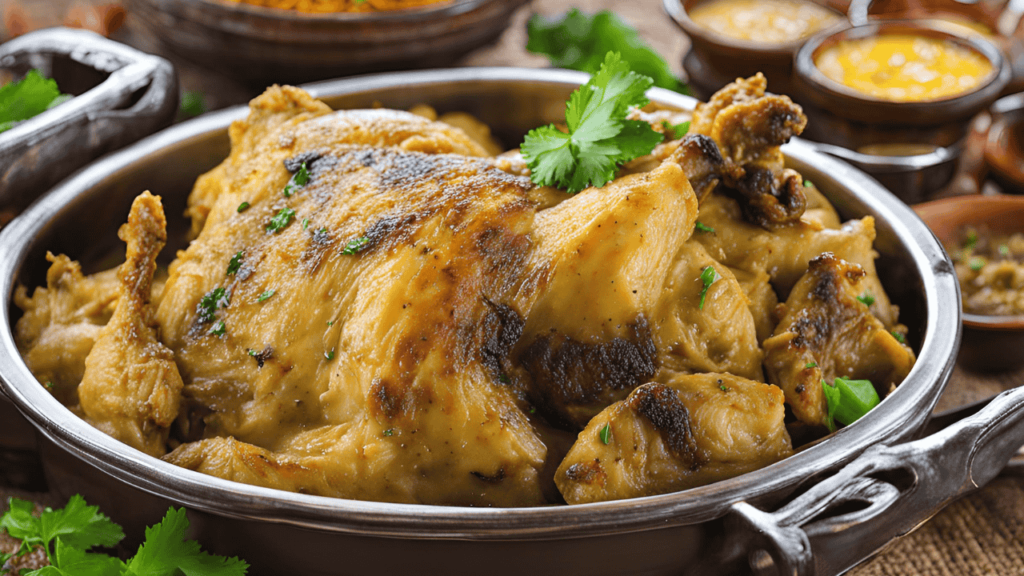Quetta, the capital of Balochistan, stands as a city filled with rich culture, history, and mouthwatering food. Among the many culinary delights this city offers, Balochistan Sajji shines as one of the most beloved and iconic dishes. If you ever visit Quetta, you must try Sajji. This traditional dish will introduce you to the region’s unique flavors and cooking methods.
What is Sajji?
The Sajji features a whole stuffed goat or chicken, slow-cooked until the meat becomes tender and juicy. The chef marinated the meat with a special blend of spices and then roasted it over an open flame. The outer layer of the meat turns crispy and golden while the inside stays moist and flavorful. People often serve Sajji with flatbread, rice, and various chutneys or sauces.
The History and Origins of Sajji
The sajji originates from the Baloch people, known for their love of meat and grilling techniques. Traditionally, they prepared Sajji during celebrations, family gatherings, or special events. Over time, Sajji became a staple in Quetta, gaining fame beyond the region. Today, it’s not only a local favorite but also a must-try dish for travelers.
The Ingredients That Make Balochistan Sajji Special
To prepare Sajji, chefs choose only the finest ingredients. The selection of meat, spices, and cooking methods all contribute to the dish’s unique taste.
1. Meat:
- People most commonly use goats for Sajji, although chickens are a popular alternative.
- Chefs clean, debone, and marinate the whole goat or chicken to ensure the flavor infuses the meat.
2. Spices:
- Chefs use a mix of cumin, coriander, black pepper, and red chili powder in the marinade.
- The marinade also includes yogurt, garlic, ginger, and lemon juice, which tenderize the meat and bring out its flavor.
- Some recipes feature special Balochi spice blends, which contribute to the Sajji’s distinctive taste.
3. Garnishes and Sides:
- Sajji is usually paired with naan (flatbread) or rice.
- A variety of chutneys, such as mint, tamarind, or yogurt, often accompany the dish.
- Some places also serve fresh salads alongside Sajji to balance the richness of the meat.
The Process of Making Balochistan Sajji
Making Sajji requires both skill and patience. Here’s a step-by-step breakdown of the process:
Step 1: Preparing the Meat
- Chefs thoroughly clean the meat (goat or chicken) and marinate it with a blend of spices, yogurt, and lemon juice.
- Marinating the meat for several hours or overnight allows the flavors to fully penetrate.
Step 2: Stuffing the Meat
- Chefs stuff the marinated meat with a mixture of rice or vegetables, although some variations only involve seasoning the outside of the meat.
- Stuffing enhances the flavor, and the rice absorbs the juices as the meat cooks.
Step 3: Cooking the Sajji
- Chefs slowly roast the stuffed meat over an open flame or inside a large clay oven known as a “tandoor.”
- The slow cooking method ensures the meat becomes tender and juicy while the outer skin crisps up and turns golden brown.
- Cooking the Sajji takes several hours, but the result makes the wait worthwhile.
Where to Find the Best Sajji in Quetta?
Several restaurants and food stalls in Quetta serve Sajji, but a few stand out for their exceptional taste and quality. Here are some of the top places to visit:
1. Shahbaz Restaurant
- Shahbaz Restaurant serves some of the most succulent Sajji in Quetta. Locals and tourists alike flock to this restaurant to enjoy both goat and chicken Sajji.
2. Sialkoti Sajji House
- Famous for large portions and rich flavors, Sialkoti Sajji House is a family-friendly restaurant offering traditional Sajji. Their method of slow-cooking creates an unforgettable taste.
3. Tandoor Restaurant
- Tandoor Restaurant is renowned for its authentic Balochi Sajji, offering various meat options. Their Sajji comes with rice and chutneys, making it a complete meal.
Tips for Enjoying Balochistan Sajji
To fully appreciate Sajji, pairing it with the right sides will complement its rich flavors. Here are some tips:
- Naan or Roti: Sajji pairs perfectly with naan or roti. The soft bread helps balance the strong flavors of the meat.
- Rice: Biryani rice or simple steamed rice makes a great side dish for Sajji.
- Chutney: Serve Sajji with a side of chutney (mint, tamarind, or yogurt) to enhance the flavor and add a refreshing contrast to the meat.
- Fresh Salad: A salad of cucumbers, tomatoes, and onions helps cut through the richness of the dish.
Balochistan Sajji offers more than just a delicious meal; it provides a cultural experience. Eating Sajji in Quetta not only delights your taste buds but also connects you to the region’s rich culinary heritage. The tender meat, spicy marinade, and smoky aroma make Sajji an unforgettable dish. Whether you’re a meat lover or a curious foodie, you’ll find that this dish is the heart and soul of Quetta’s food scene.
So the next time you visit Quetta, make sure you don’t miss the opportunity to enjoy this mouthwatering dish. It will give you a taste of the city’s vibrant culture and passion for great food.
